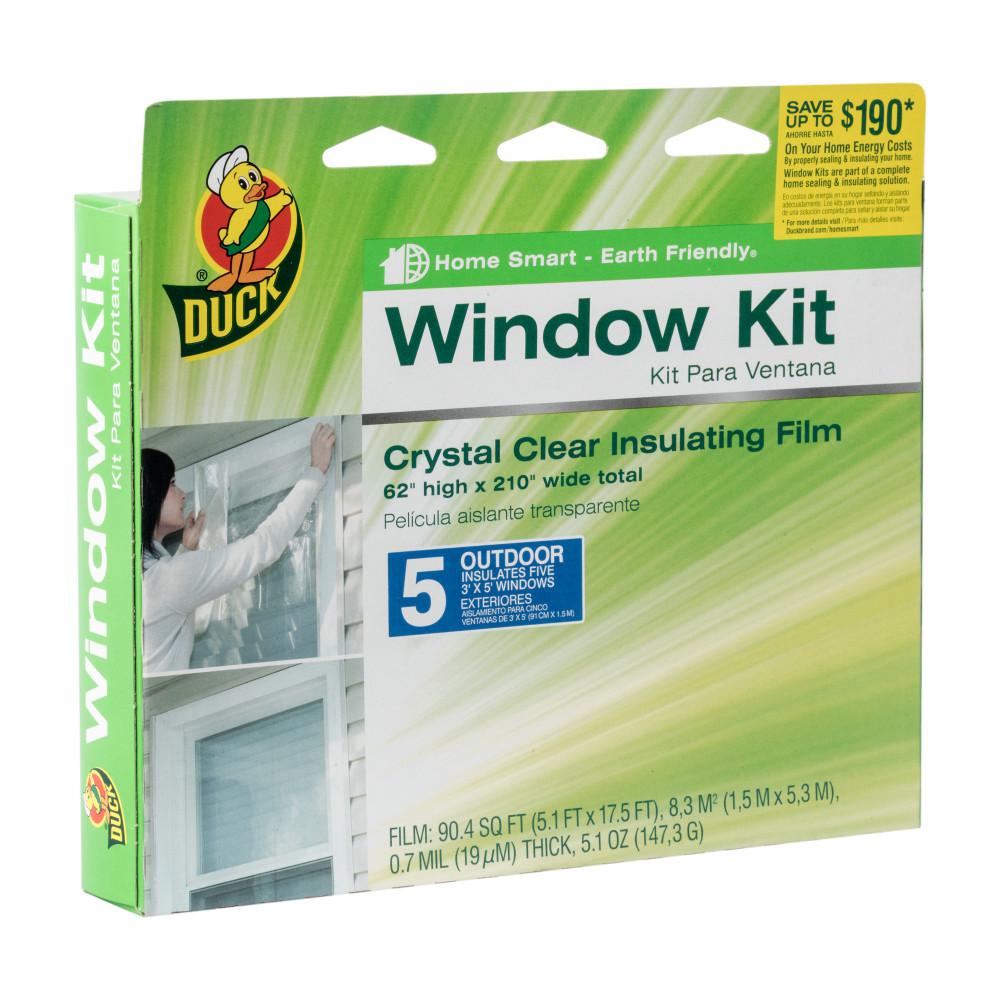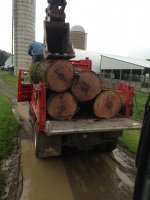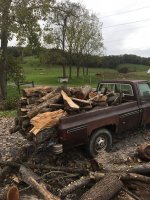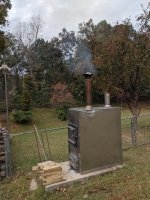You are using an out of date browser. It may not display this or other websites correctly.
You should upgrade or use an alternative browser.
You should upgrade or use an alternative browser.
What kind of Firewood furnace do you have ?
- Thread starter NorthcentralYooper
- Start date
czar800
Mastermind Approved!
- Local time
- 1:29 PM
- User ID
- 533
- Joined
- Jan 14, 2016
- Messages
- 7,167
- Reaction score
- 37,480
- Location
- Ellwood City
I got one too and they’re definitely hungry!
It’s been one of the best things I’ve ever bought. I couldn’t Afford to heat my house without it.
MG2186
Pinnacle OPE Member
- Local time
- 12:29 PM
- User ID
- 389
- Joined
- Jan 3, 2016
- Messages
- 2,076
- Reaction score
- 7,988
- Location
- Summer,IA
We heat the house,shop and another out building. When dad bought the 5048 in 2010 he said he shoulda put one in years ago. We ran the 5048 for 2 years then got the 6048. My brother bought the 5048 then. My BIL also has a 5048 and I bought another 6048 that needs the water tank welded, it froze on the previous owner. Everyone ask how we like them, I just tell them if u don’t like cutting wood don’t get one, I think they are great myself. If I were to buy a new one think I’d get a Portage and Maine or Big Hoss. They seem to have a better burn chamber and get a better burnIt’s been one of the best things I’ve ever bought. I couldn’t Afford to heat my house without it.
czar800
Mastermind Approved!
- Local time
- 1:29 PM
- User ID
- 533
- Joined
- Jan 14, 2016
- Messages
- 7,167
- Reaction score
- 37,480
- Location
- Ellwood City
Yup they’re not for everyone. I’m lucky I got equipment and a good source of firewood so it’s not very involved for me to get enough wood.
MG2186
Pinnacle OPE Member
- Local time
- 12:29 PM
- User ID
- 389
- Joined
- Jan 3, 2016
- Messages
- 2,076
- Reaction score
- 7,988
- Location
- Summer,IA
Yup same here, instead of getting pickup loads of wood we get gooseneck trailer of logs nowYup they’re not for everyone. I’m lucky I got equipment and a good source of firewood so it’s not very involved for me to get enough wood.
czar800
Mastermind Approved!
- Local time
- 1:29 PM
- User ID
- 533
- Joined
- Jan 14, 2016
- Messages
- 7,167
- Reaction score
- 37,480
- Location
- Ellwood City
460 magnum
Pinnacle OPE Member
- Local time
- 12:29 PM
- User ID
- 1198
- Joined
- Apr 26, 2016
- Messages
- 948
- Reaction score
- 3,172
- Location
- Very southern Illinois
Anyone have any suggestions for a single wide trailer.
czar800
Mastermind Approved!
- Local time
- 1:29 PM
- User ID
- 533
- Joined
- Jan 14, 2016
- Messages
- 7,167
- Reaction score
- 37,480
- Location
- Ellwood City
Anyone have any suggestions for a single wide trailer.
I have a PJ trailer and a Cam-Superline both have been good to me.
Locust Cutter
Air Force Redneck
Are you asking about heating a single wide? Either way, the simple (not so simple to calculate) way to know roughly what you need, is to do a heating calculation on the structure to determine what you minimum req'ts are. Then (my rule of thumb) go 30-50% more than that and you should be in a comfortable area between capacity and loading. I.E; You wouldn't use a Prius to tow a GN trailer. Most people also wouldn't want to drop a 454 in a Mazda Miata, as it's far too much, and there's no practical use for it's output.Anyone have any suggestions for a single wide trailer.
If you get just barely enough, it will always be running wide open and your wood consumption will suffer. If you get too much, it will suffer poor performance due to the fire trying to snuff itself.
How good is the insulation, how good are the windows and roof, are there skirts blocking the belly of the trailer, etc.
czar800
Mastermind Approved!
- Local time
- 1:29 PM
- User ID
- 533
- Joined
- Jan 14, 2016
- Messages
- 7,167
- Reaction score
- 37,480
- Location
- Ellwood City
Oh snap I was thinking equipment... 
460 magnum
Pinnacle OPE Member
- Local time
- 12:29 PM
- User ID
- 1198
- Joined
- Apr 26, 2016
- Messages
- 948
- Reaction score
- 3,172
- Location
- Very southern Illinois
Are you asking about heating a single wide? Either way, the simple (not so simple to calculate) way to know roughly what you need, is to do a heating calculation on the structure to determine what you minimum req'ts are. Then (my rule of thumb) go 30-50% more than that and you should be in a comfortable area between capacity and loading. I.E; You wouldn't use a Prius to tow a GN trailer. Most people also wouldn't want to drop a 454 in a Mazda Miata, as it's far too much, and there's no practical use for it's output.
If you get just barely enough, it will always be running wide open and your wood consumption will suffer. If you get too much, it will suffer poor performance due to the fire trying to snuff itself.
How good is the insulation, how good are the windows and roof, are there skirts blocking the belly of the trailer, etc.
It's a new trailer bought it 2 years ago and the dang thing is way to costly to heat with just the electric heat alone. The insulation is ok I guess but the dang cheap a** windows in it are junk if the wind is blowing hard out of the north like it usually does in the winter the draft will just about put a lighter out. I was also wondering if it would make my insurance go through the roof or maybe even cause them to want to drop me.
Locust Cutter
Air Force Redneck
It's a new trailer bought it 2 years ago and the dang thing is way to costly to heat with just the electric heat alone. The insulation is ok I guess but the dang cheap a** windows in it are junk if the wind is blowing hard out of the north like it usually does in the winter the draft will just about put a lighter out. I was also wondering if it would make my insurance go through the roof or maybe even cause them to want to drop me.
Well, I can't speak to the insurance, since I don't know the provider, nor their proclivities for policy riders. I will say that ***generally speaking*** IF, the the unit is rated to be in a mobile home AND installed by a certified company, you'll generally be ok. There are countless ones in S.E. Kansas that are setup that way and people get by.
I would, regardless of the unit you go with, go with a modern EPA style for the increased efficiency AND the decreased clearances to combustibles. Non-EPA stoves definitely have their place, and can be MUCH more friendly in bad circumstances (crappy or wet wood, etc). They usually require much more clearance away from walls/ceilings though, neither of which you have in a single wide. You might look at a smaller Buck Stove, Pacific Energy, Vermont Castings, Earth Stove, LOPI or Jotul. There are several other brands, but those are the names I continually see good posts about. I have a P.E. T-6 stove (their largest box) in a 2 story farmhouse (roughly 2300sqft) with some piss-poor windows, spots lacking insulation, you get the idea. It effectively heats over half my house by itself while burning less than 1/3 of the wood of my Dad's old insert fireplace in His old house, all the while putting out much more usable heat.
If I did it again, I'd likely either get the V.C Defiant or the Jotul Black Bear for my place, but they'd suit my conditions as well or better than my P.E. The smallest box would likely work better for you though, given your physical size limitations. They seem to like running around 1/2 throttle best with Hedge, and idle to 1/3 with softer wood. There are posts on A.S, SawHawgz and here about people's different experiences. The older stoves will put out steadier heat over time, where the newer variety are more of a wave patter in output: A big wave of heat with initial loading/re-loading, then a lower output steady burn until coals and then a precipitous drop off. It'll still be throwing heat, but noticeably less with just coals.
Sorry for the short story, but there's a lot to consider when thinking about this and the EPA stove experience is VERY different than the older style units that you're likely more familiar with. They definitely like DRY (under 20% moisture) wood. They also burn the soft woods and conifers MUCH more cleanly that the older units. I burn mine like a freight train from roughly late-Oct through March-April depending on the weather running a mix of Pine, Cedar, Silver Maple, Ash, Hackberry, Oaks, Locust, Red Elm, Walnut and Hedge. I generally burn 3-5 cords and clean the chimney every 2-3 years getting maybe 1/2 a measuring cup of crap out. Your mileage may vary.
460 magnum
Pinnacle OPE Member
- Local time
- 12:29 PM
- User ID
- 1198
- Joined
- Apr 26, 2016
- Messages
- 948
- Reaction score
- 3,172
- Location
- Very southern Illinois
Thank you for all that valuable information sir I will for sure be getting a wood burner of some sort weather it is a stove or a boiler I haven't made up my mind.Well, I can't speak to the insurance, since I don't know the provider, nor their proclivities for policy riders. I will say that ***generally speaking*** IF, the the unit is rated to be in a mobile home AND installed by a certified company, you'll generally be ok. There are countless ones in S.E. Kansas that are setup that way and people get by.
I would, regardless of the unit you go with, go with a modern EPA style for the increased efficiency AND the decreased clearances to combustibles. Non-EPA stoves definitely have their place, and can be MUCH more friendly in bad circumstances (crappy or wet wood, etc). They usually require much more clearance away from walls/ceilings though, neither of which you have in a single wide. You might look at a smaller Buck Stove, Pacific Energy, Vermont Castings, Earth Stove, LOPI or Jotul. There are several other brands, but those are the names I continually see good posts about. I have a P.E. T-6 stove (their largest box) in a 2 story farmhouse (roughly 2300sqft) with some piss-poor windows, spots lacking insulation, you get the idea. It effectively heats over half my house by itself while burning less than 1/3 of the wood of my Dad's old insert fireplace in His old house, all the while putting out much more usable heat.
If I did it again, I'd likely either get the V.C Defiant or the Jotul Black Bear for my place, but they'd suit my conditions as well or better than my P.E. The smallest box would likely work better for you though, given your physical size limitations. They seem to like running around 1/2 throttle best with Hedge, and idle to 1/3 with softer wood. There are posts on A.S, SawHawgz and here about people's different experiences. The older stoves will put out steadier heat over time, where the newer variety are more of a wave patter in output: A big wave of heat with initial loading/re-loading, then a lower output steady burn until coals and then a precipitous drop off. It'll still be throwing heat, but noticeably less with just coals.
Sorry for the short story, but there's a lot to consider when thinking about this and the EPA stove experience is VERY different than the older style units that you're likely more familiar with. They definitely like DRY (under 20% moisture) wood. They also burn the soft woods and conifers MUCH more cleanly that the older units. I burn mine like a freight train from roughly late-Oct through March-April depending on the weather running a mix of Pine, Cedar, Silver Maple, Ash, Hackberry, Oaks, Locust, Red Elm, Walnut and Hedge. I generally burn 3-5 cords and clean the chimney every 2-3 years getting maybe 1/2 a measuring cup of crap out. Your mileage may vary.
I know what ur saying man but I can't swing new windows for the whole dog gone house which is what would be required... cheap trailer junkNot sure about what stove but if I had a draft that would almost put a lighter out I would be fixing that regardless of what I went with.
Locust Cutter
Air Force Redneck
You might be better off with the outdoor boiler option, simply to have the fire outside and not lose floor space. But, the heat is contingent on having electricity to run the pump and the central fan. IF losing power is sometimes a problem, then the indoor unit becomes more attractive, not needing electricity for operation and having another option for cooking, if your range/stove is an electric unit. If natural gas or LP, then it's a bit less of a win.
kingOFgEEEks
Pinnacle OPE Member
- Local time
- 1:29 PM
- User ID
- 843
- Joined
- Feb 9, 2016
- Messages
- 1,747
- Reaction score
- 7,537
- Location
- Tioga County, PA
I like the OWB with heat under the floor idea. That would be even, and cover the entire trailer. Just make sure you have good skirting around the bottom, and seal up the windows somehow. Even those cheap plastic window wraps are better than nothing, and cut a lot of draft.


460 magnum
Pinnacle OPE Member
- Local time
- 12:29 PM
- User ID
- 1198
- Joined
- Apr 26, 2016
- Messages
- 948
- Reaction score
- 3,172
- Location
- Very southern Illinois
You might be better off with the outdoor boiler option, simply to have the fire outside and not lose floor space. But, the heat is contingent on having electricity to run the pump and the central fan. IF losing power is sometimes a problem, then the indoor unit becomes more attractive, not needing electricity for operation and having another option for cooking, if your range/stove is an electric unit. If natural gas or LP, then it's a bit less of a win.
All electric
Hardhack
Well-Known OPE Member
- Local time
- 1:29 PM
- User ID
- 2851
- Joined
- Mar 19, 2017
- Messages
- 28
- Reaction score
- 77
- Location
- at home in the woods
I have a Kalamazoo wood/coal furnace in the basement have not used it in twenty years.
Central Boiler CL-40 took its place no more wood in the house, burn just about the same amount of wood.
Central Boiler CL-40 took its place no more wood in the house, burn just about the same amount of wood.
Grjfer
Super OPE Member
- Local time
- 12:29 PM
- User ID
- 7101
- Joined
- Aug 21, 2018
- Messages
- 106
- Reaction score
- 611
- Location
- Twinlakes area, Arkansas
MikaeloBlurryB
OPE Member
I used to have a firewood furnace a few years ago, but now I switched to something else.
The wood became too expensive in my area, and now I use air source heat pumps from https://www.spartamech.co.uk/heat-pumps/. This device is environmentally and financially friendly since it produces more energy than it uses. It can heat up your house and give you hot water because it takes the heat outside the house. It’s much more reliable, and I don’t have to worry about maintenance. Also, the firewood furnace is more expensive in terms of installation and maintenance because you need to have a lot of electronics around it.
The wood became too expensive in my area, and now I use air source heat pumps from https://www.spartamech.co.uk/heat-pumps/. This device is environmentally and financially friendly since it produces more energy than it uses. It can heat up your house and give you hot water because it takes the heat outside the house. It’s much more reliable, and I don’t have to worry about maintenance. Also, the firewood furnace is more expensive in terms of installation and maintenance because you need to have a lot of electronics around it.
Last edited:
Similar threads
- Replies
- 7
- Views
- 2K










